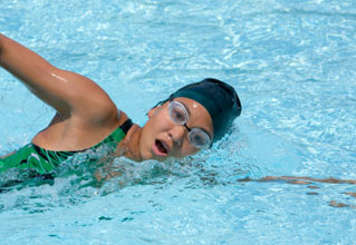Before you had your transplant you might have felt weak and tired and may have had to limit your physical activity. However, regular physical activity is important for staying healthy and keeping a healthy body weight after transplant, especially if you are taking immunosuppressants that can increase your appetite.
Top five reasons to exercise regularly when you have a transplant
- You will have more energy.
- You will have stronger muscles and bones.
- You will feel better about yourself, especially as you start to become fitter and better able to do your exercises.
- You will help to keep your weight in check, especially if you are on prednisone.
- You will live longer.
After initial recovery from transplant surgery, many patients find that they have more energy and want to be active again. People who receive a transplant can go on to live a very active life once they take care of their health.

How soon can I exercise after my transplant surgery?
It will take you about six weeks to fully recover from kidney transplant surgery.
You can do gentle aerobic exercise, such as walking or light chores around the house, from about a week after you get your transplant. Over time, you can slowly begin to increase the amount of walking or other light activity that you can do each day. But if you have intense pain or shortness of breath, stop exercising right away and get advice from your transplant team or family doctor.
After about three weeks, you can move on to more energetic activities such as running and light weights, if you feel up to them. But don’t lift anything heavier than a bag of milk, as your body is still recovering from the surgery for the first four to six weeks. Lifting, pushing or pulling too much weight at this time may tear your incision (the wound from your surgery).
Usually, after six weeks, you can resume normal exercise and physical activities, but there are certain activities that may be high risk with your new kidney.
Higher-risk activities for teens with kidney transplants
If you have received a kidney transplant, you will know that your new kidney is in a different place from your original kidney. Because of its location in your body, the new kidney is at greater risk for injury.
Some higher-risk sports and activities include:
- football
- rugby
- hockey
- wrestling
- gymnastics
- tackle football
- kickboxing
- karate
- tae kwon do
- mountain biking
- aerial skiing
- paint ball.
So before you take part in any of these riskier activities, consider how much they mean to you and how comfortable you are taking the small (but not zero) risk of injury. It’s rare for organs to be seriously damaged when a person takes part in these riskier sports, but it can happen.
Ask your transplant team if you have questions about specific exercises or activities. Also talk to your team if your preferred sport is not on the list but you think it is high risk.
If you have played a high risk sport such as hockey all your life and want to continue, you may be able to use something to protect your abdomen while playing. Look into protective clothing or ask a member of the orthotics department at your hospital if you can have a protective device. You will have to pay for any device or clothing, however, and may need to have them altered as your body changes.
On the other hand, if you have never played a risky sport, don’t take it up after a kidney transplant. Try tennis, swimming or ultimate Frisbee instead!
Your physical activity routine
As you return to regular physical activity, your routine should include:
- daily aerobic, or “cardio”, exercises such as walking up stairs, running, cycling or playing soccer – these will get your heart and lungs working well
- weight-bearing exercises such as walking or lifting light weights (at least three times a week) - these exercises will make your muscles and bones stronger.
One important way to develop a healthy lifestyle is to get at least some exercise every day. Health Canada recommends that all teenagers get 60 minutes of daily exercise. This can include aerobic exercises such as walking up stairs, cycling or playing soccer (to get your heart and lungs working well) and some other, weight-bearing, exercises such as running or lifting weights.
How to exercise safely
Over time, build up your exercises gradually – don’t expect to reach your goals all at once.
Always take time to warm up and cool down to prevent injury and listen to your body if you feel tired or sore.
If your medicines have caused your bones to become a lot weaker, you may need to stop or cut back on some activities to prevent injury. Speak to your transplant team or your physiotherapist if this applies to you.

Remember, the best exercise is one that you will actually do!
If the thought of exercising for an hour a day puts you off, start by thinking of the type of exercise you are interested in. If you like walking, you might want to start by walking more, taking a longer route to school or walking the dog in the evening.
Some people find it easier to be active by joining a class and exercising with other people. Others already have a type of exercise they enjoy such as swimming or tennis. Think about what you like doing so that exercise stays interesting!
If you decide to try a new activity, give it your best shot, but if you hate it after a few tries, it’s ok to try something else. You could make a rule that you can’t quit one thing until you decide what activity you will do instead and when you will start it. Remember, exercise is supposed to be fun!
For more ideas, take a look at Health Canada's
physical activity tips for 12- to 17-year olds.
Staying hydrated as you exercise
If you are exercising and sweating, you will be losing more fluid than normal through your skin. To reduce the risk of dehydration – hint, if you feel thirsty, you are already dehydrated! – drink more fluids during exercise than you would drink usually.
A useful guideline is at least 2 cups (500 mL) more than your usual amount of fluids. You may need to increase this if you are exercising vigorously or for a long time.
Goal setting and exercise
Whatever type of exercise you try, create some goals to keep you motivated. Talk to your transplant physiotherapist about setting goals for physical activity.
One way to help with goal setting is to use a pedometer. This is a device that you can wear on your arm or attach to your pants to count how many steps you take every day. A general recommendation is 10,000 steps. This sounds like a lot, but with regular physical activity this goal is often easier to reach than you think!
You might also find this
goal-setting template useful, especially if you check off your goals as you achieve them.






